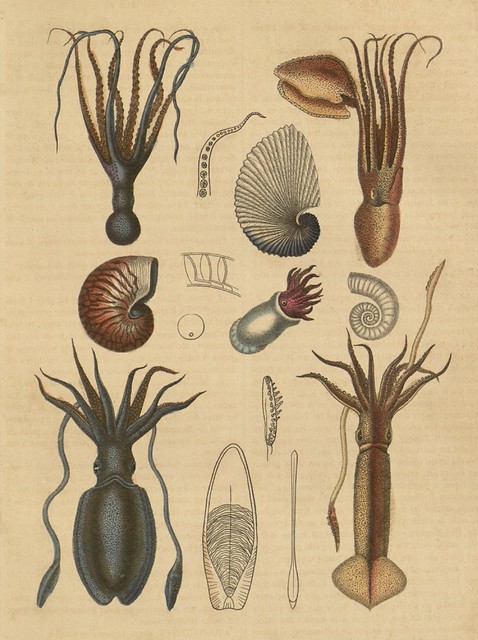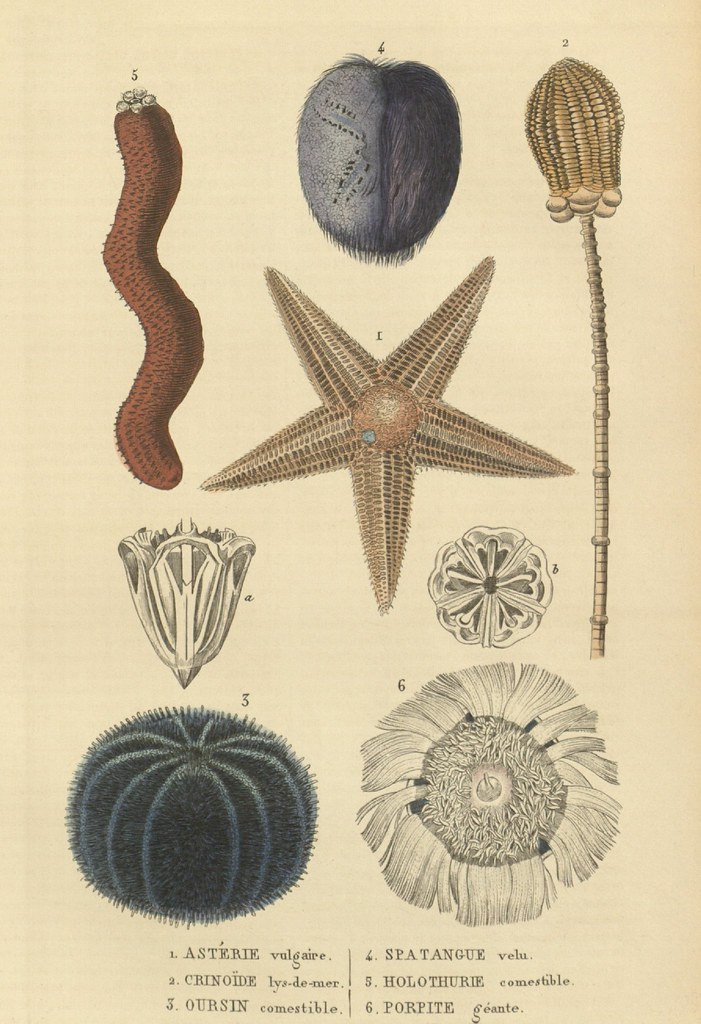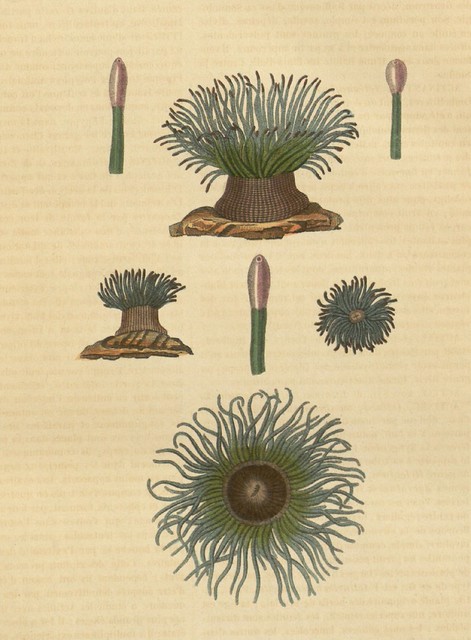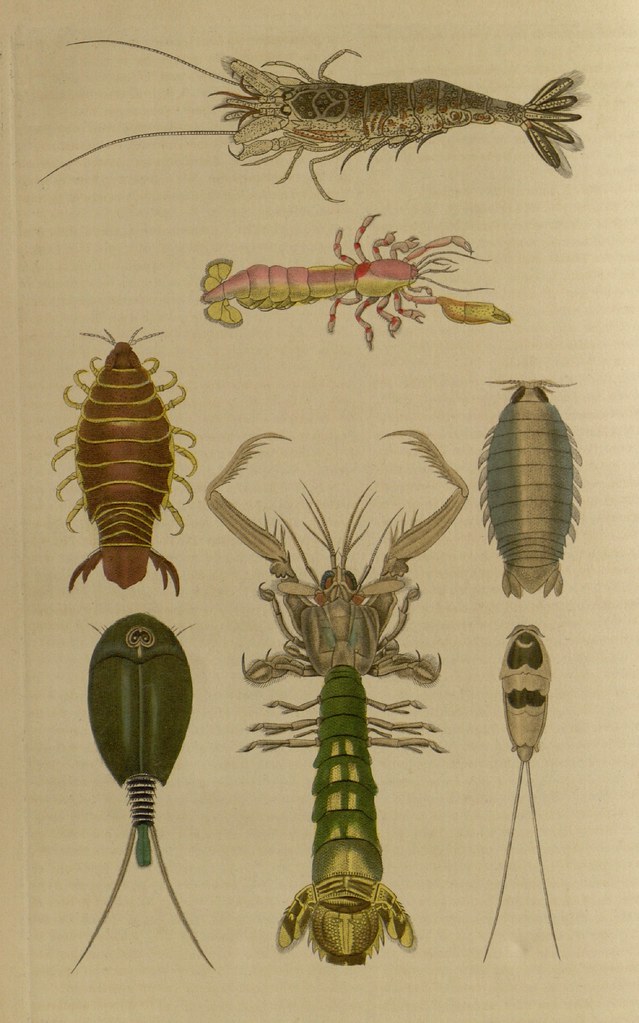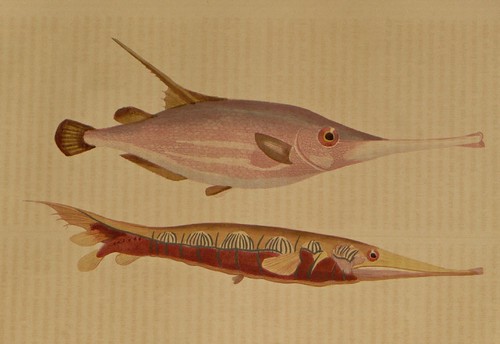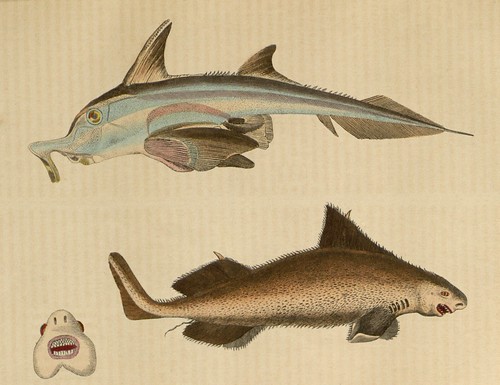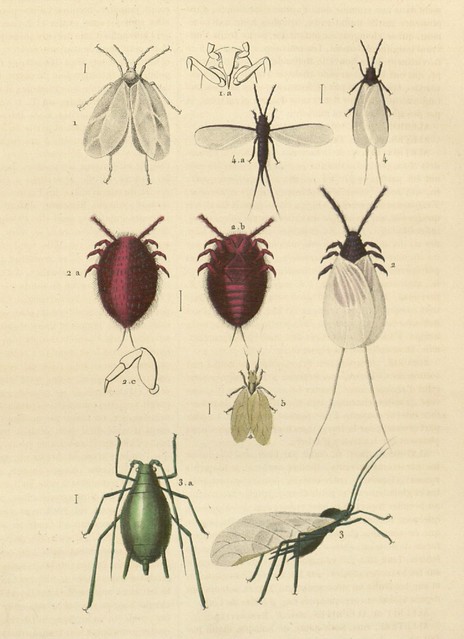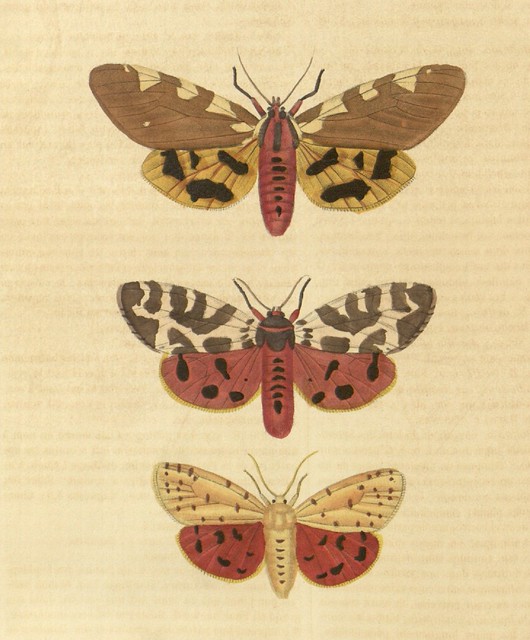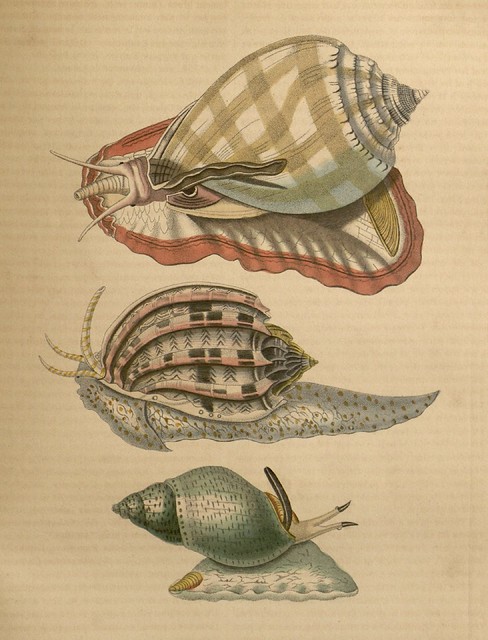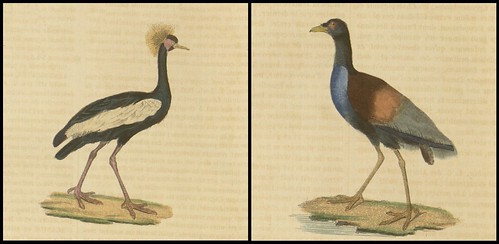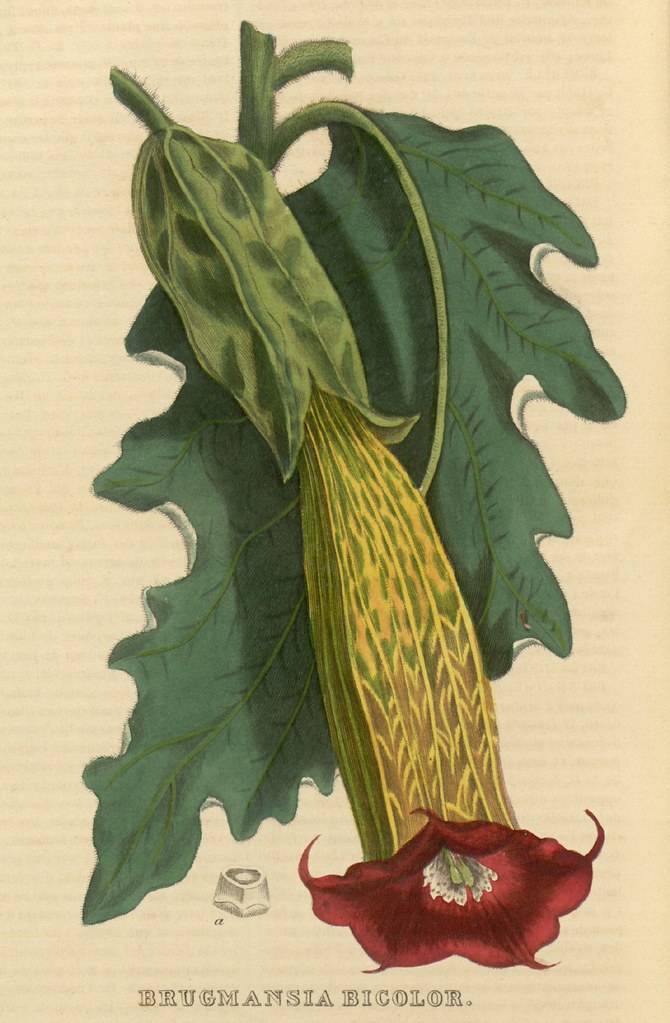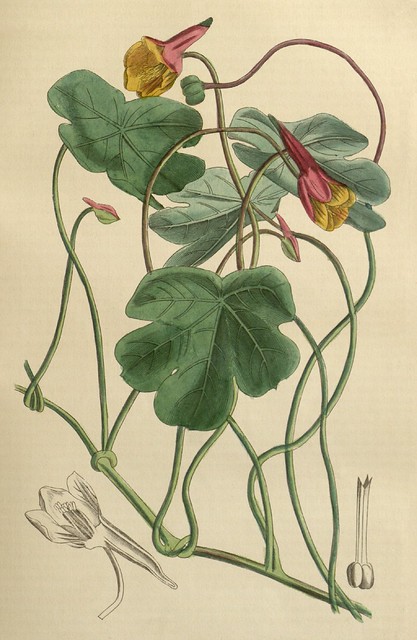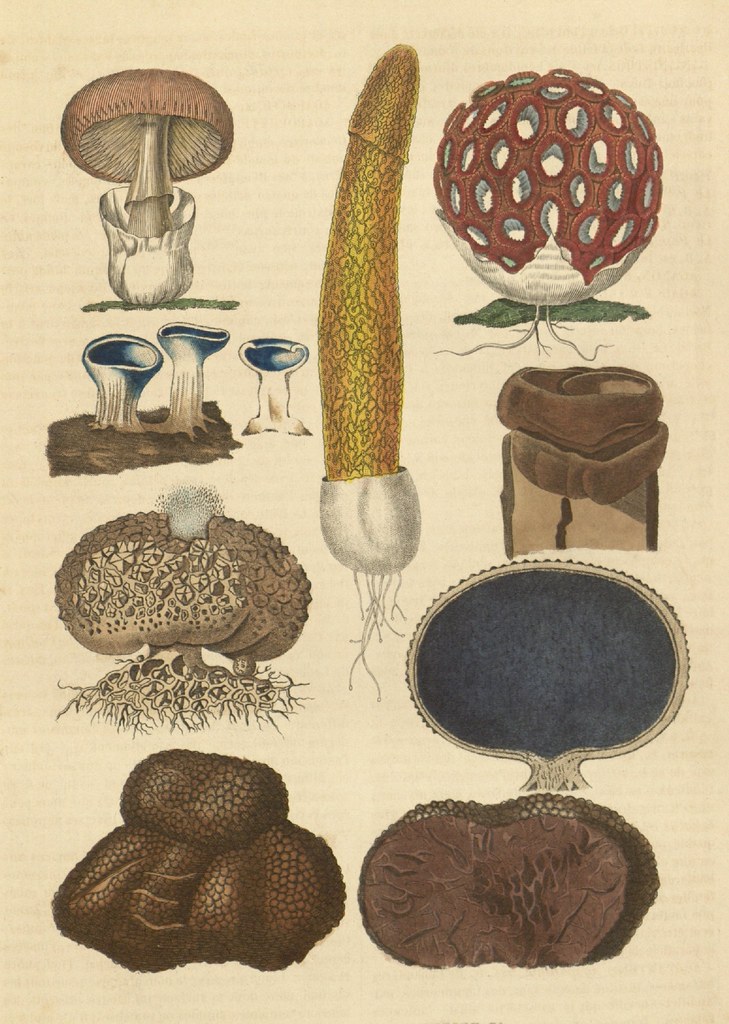The arabesque is a type of curvilinear decoration in painting, prints and metalwork etc, with intricate intertwining leaf, flower, animal, or geometrical designs. Rather than having Islamic origins, common usage refers to the flowing abstracted acanthus leaf scroll ornament that began to appear during the Renaissance, inspired by Greek and Roman art works.

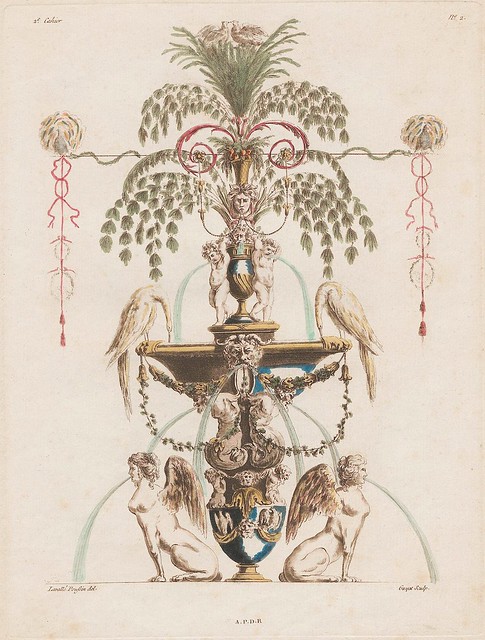
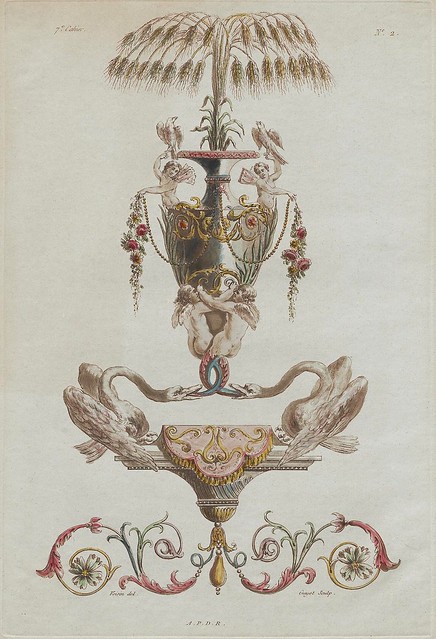

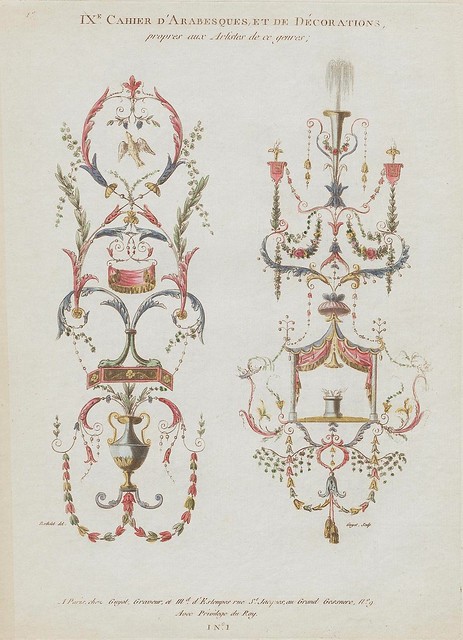
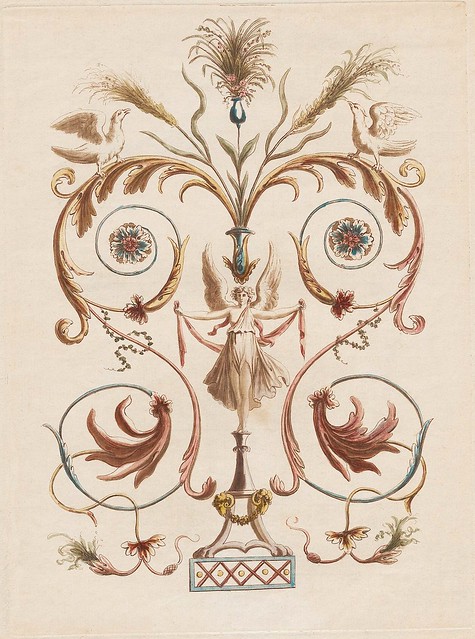
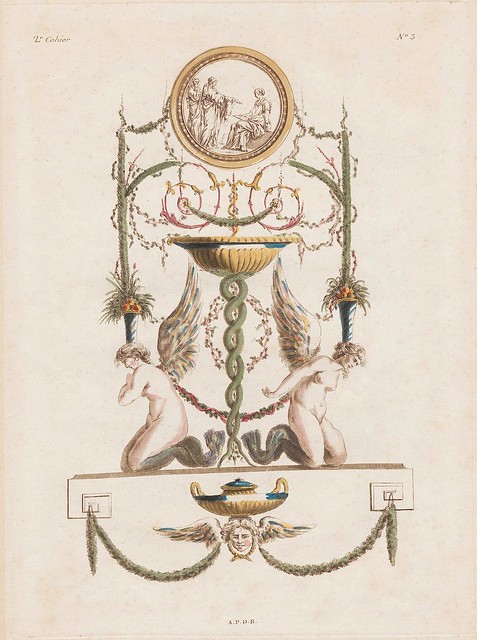
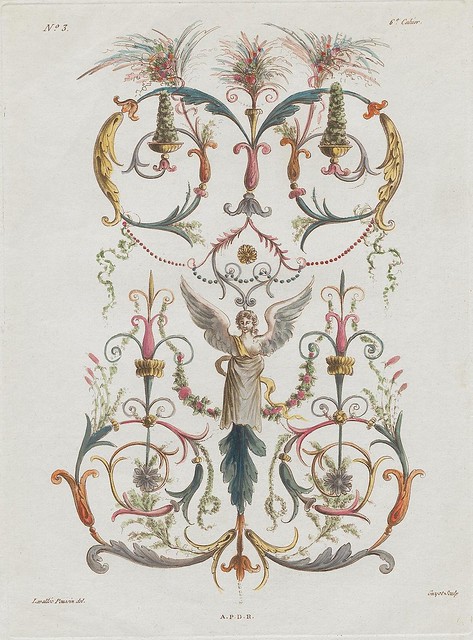
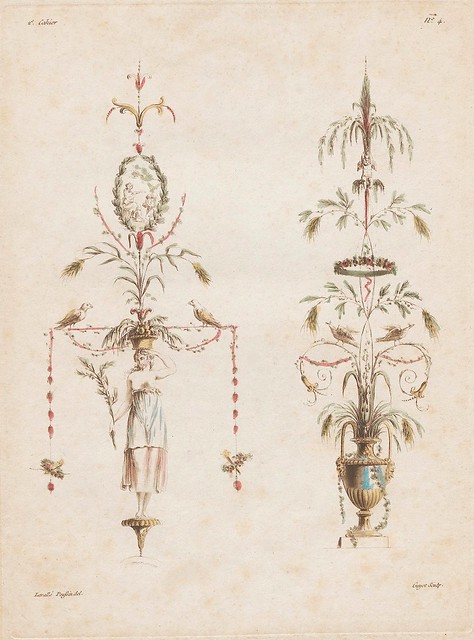
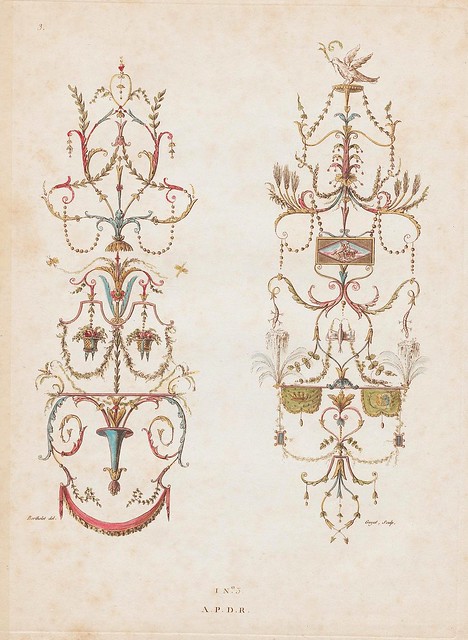

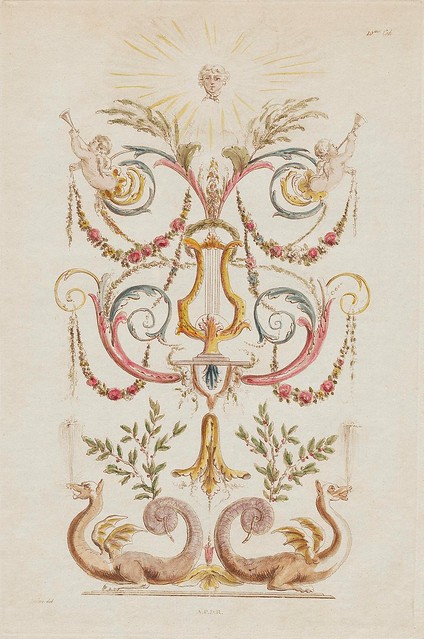
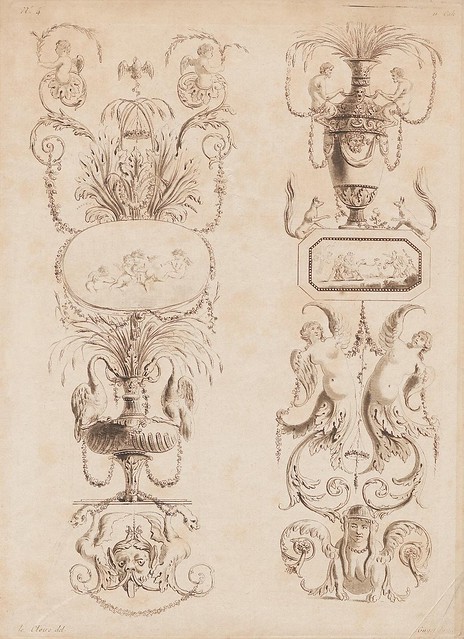
[click through to enlarged versions; all illustrations were cropped from the
full page and have been variously spot-cleaned in the background]
full page and have been variously spot-cleaned in the background]
Etienne de Lavallée-Poussin (1735 - 1802) was a French interior decoration designer, printmaker and artist who spent many years honing his artistic craft in Rome.
The decorative forms seen above were first produced in the 1780s, inspired by classical sources: the antiquities of Herculaneum, the grotesques of Raphael, and the designs on ancient Roman palaces and villas.
Lavallée-Poussin contributed the great majority of designs to the book, although Guyot's 1810 engravings (hand-coloured) also feature compositions by Voisin, Le Clerc, Berthelot, de Claire, and Janneret.
'Nouvelle Collection d'Arabesques, Propres à la Décoration des Appartemens' (1810) by E de Lavallée-Poussin and Marie Alexandre Lenoir [introduction] has recently been digitised and posted online by the University of Heidelberg. {click anything below 'Inhalt' and then 'Vorschau' for thumbnail pages.
It's hard to tell from the very brief mentions of this volume online, but the Heidelberg copy seems to be missing at least a few designs (by Janneret) that show the arabesques in situ as architectural motifs in apartments.
